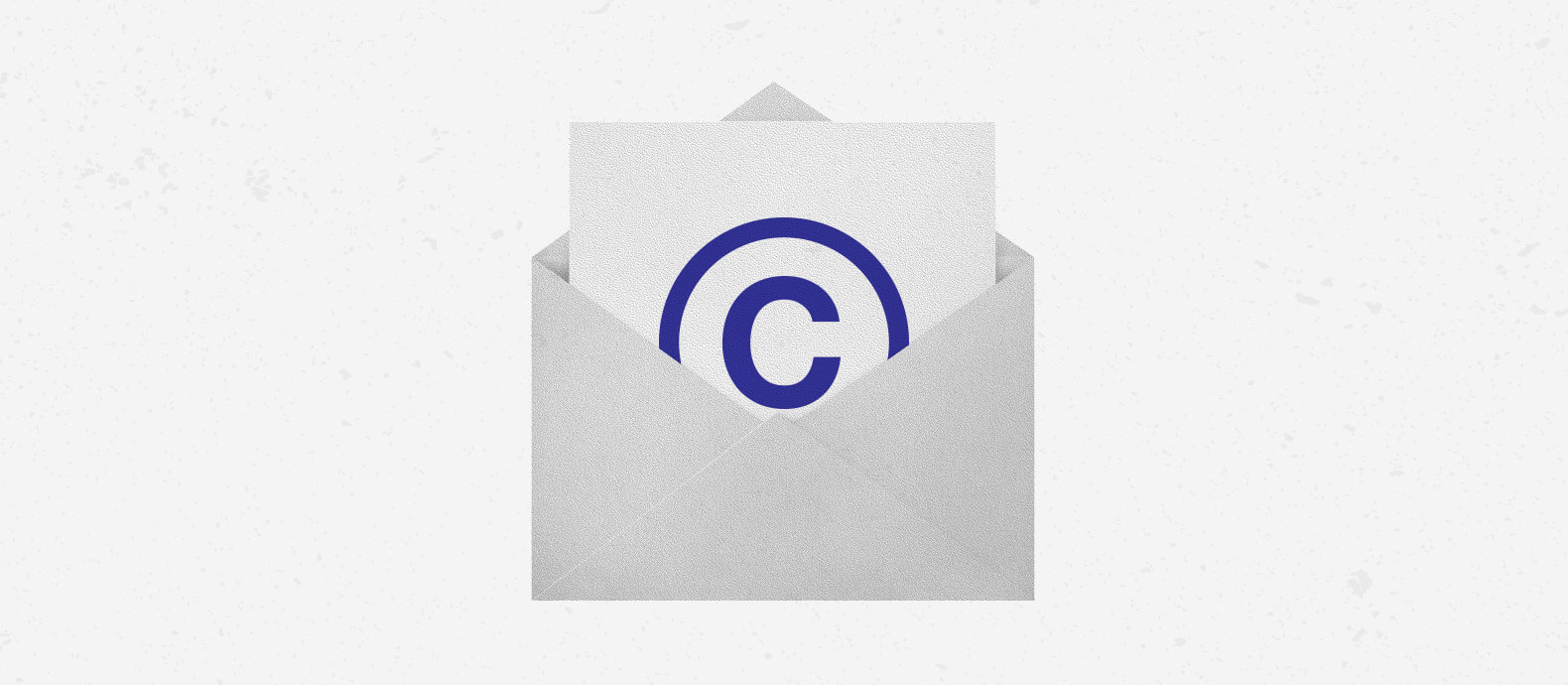Copyright infringements are serious matters that can damage your business, not only in reputation but in lost sales. Don’t let competition and online scammers benefit from your brand’s intellectual property (IP) and steal your revenue. In this guide, we’ll show you how to send a copyright infringement notice and other tools to help you take back what is rightfully yours.
Summary:
- Background on copyright infringement notices
- How to send a copyright infringement notice
- Additional ways to take down copyright infringements
Details on copyright infringement notices
Copyright infringement notices are used to formally notify an infringer that their content needs to be taken down. In most cases, sending a cease and desist letter is the most appropriate notice to send when you identify infringement. However, a DMCA takedown notice can also be used in smaller-scale, internet-based infringement.
What’s the difference between a cease and desist letter and a DMCA takedown? Cease and desist letters can be used to take down more than just infringement; they can also be used to address trademark infringement and harassment. DMCA takedown notices, on the other hand, should only be used to address copyright infringement online.
If you have already identified someone infringing on your brand, it’s important to send a copyright infringement notice right away. If you think you’ve found infringement but aren’t sure, take a look at a few of the most common infringement examples our clients face online.
Copyright infringement examples to address with a copyright infringement notice:

Social media infringement
Infringement is rampant on social media platforms like Facebook, TikTok, Instagram, and more. Scammers can easily steal and use your brand’s copyright content and steal your revenue by selling counterfeit products via these platforms. When you spot social media infringement, send a copyright infringement notice directly to the infringing account and report them to the applicable platform.
Spoof websites
Just as a scammer can impersonate your brand on social media, they can also easily impersonate your brand on stand-alone spoof websites. Spoof websites use stolen content like brand names, logos, product names, and design, to fool customers into believing their site is legitimate. Sending a C&D is the best option to begin taking down an entire spoof website, as this will likely include trademark infringements.
Counterfeit websites
Counterfeit websites sell cheap knock-off versions of legitimate products, stealing revenue from the brands whose products they copy. Counterfeit websites could be spoof sites imitating one brand, or a site dedicated to knocking off various brands at low prices. Again, sending a C&D letter will likely be the most appropriate course of action when sending a copyright infringement letter to a counterfeit website.
How to send a copyright infringement notice
Sending a copyright infringement notice immediately is essential to take down infringements quickly, so they can’t continue stealing your revenue. Follow these steps to send a copyright infringement notice:
Step 1: Identify the infringer
To send a copyright infringement notice, you will need to know who to address the copyright infringement letter to (aka the infringer). You should have their name, address (if possible), and contact information, as well as your own. All domain owners need easily-accessible contact information, and you can use ICANN to look up domain registrants to find their contact information.
Step 2: Write your copyright infringement letter
A copyright infringement letter should include your contact information, a copyright infringement notice of the specific infringement that has occurred, and a deadline to take down the content. You can use a cease and desist letter template or a DMCA takedown template and fill in your personal information to make this process faster.
Step 3: Send your copyright infringement letter
You can send your copyright infringement notice via the mail, email, in-person, or even over the phone. However, when you send your copyright infringement letter, it’s vital you keep a copy of the letter and record the date in which the recipient got your notice. If sending through the mail, ensure you get certified mail to be notified when they receive the copyright infringement letter.
Are copyright infringement notices effective?
Sending a copyright infringement notice is a great first step to address infringement, but it doesn’t mean the recipient will heed your request. Scammers can simply ignore your copyright infringement notice, and will know that they can continue doing so without repercussions if you don’t take additional legal action.
If your stolen content isn’t taken down by the deadline you provided in your removal request, try another method. It’s a good idea to invest in professional help from a lawyer, revenue recovery service, or other IP enforcement professionals.
Additionally, there are a few other methods you can use to address infringement online besides sending a copyright infringement notice.
Additional methods to take down infringements of your copyright
If your copyright infringement notice failed to remove your stolen brand content, one of these other infringement takedown methods may work for you.
Report infringement to the platform on which it is occurring
Platforms such as Facebook and Instagram, as well as online marketplaces like Amazon and Shopify, all prohibit infringement. Unfortunately, it’s difficult for the sites to identify infringement themselves, so it will likely remain up unless someone reports it. If you find infringement on one of these sites, use their system to report the infringement and get it taken down.
Where can you report infringements on these platforms? These links will help you report infringements on:
Submit a Google takedown request form
If you can’t get an infringer to take down their spoof website or counterfeit products stealing revenue from your brand, you can contact Google. As the most popular search engine in the world, getting a website de-indexed by Google will keep thousands of consumers from finding the website. You should still work to get the site taken down altogether, but submitting a Google takedown request helps in the meantime.
Invest in a brand protection solution like Red Points
Dealing with infringements can quickly spiral out of control, as scammers across various platforms and sites steal your brand content. Copyright infringements are difficult to detect and require a near-constant monitor of various sites and platforms across the web. The most efficient way to enforce your IP and take back your revenue from scammers is investing in a service like Red Points.
Red Points technology is pioneering Revenue Recovery and has helped thousands of brands take back their content and revenue from online scammers. With advanced brand protection tools that detect and take down infringements automatically, Red Points ensures your brand is better protected with far less effort required.
What’s next
Your intellectual property isn’t something you can afford to have copied and used by online scammers who steal your revenue and destroy your brand reputation. Sending a copyright infringement notice will help you start the takedown process, but make sure you follow-up with additional methods if the content remains online. Enforcing your IP online can be time consuming and stressful, but Red Points can help make it effortless.
Safeguard your copyright and take back your revenue with Red Points’ copyright infringement detection software.






